Zotac ZBOX MAGNUS EN970 Review - A Gaming mini-PC Done Right
by Ganesh T S on September 28, 2015 8:00 AM ESTGaming Benchmarks
The gaming credentials of the GTX 960 are quite impressive. Even though the tag indicates a desktop GPU, the internal hardware is still a mobile GPU - the GTX 970M. It is based on Maxwell GM204. The performance, however, should be similar to that of the desktop GTX 960.
For the purpose of benchmarking, we chose four different games (Sleeping Dogs, Tomb Raider, Bioshock Infinite and DiRT Showdown) at three different quality levels. In addition, starting with this review, we are also bringing three more benchmarks involving The Talos Principle and GRID Autosport. As someone focusing on HTPCs and multimedia aspects, I rarely get to process gaming benchmarks, even while evaluating GPUs. One of the aspects that I feared was spending lot of time in installing the same games again and again on different PCs under the review scanner. The solution was to go the Steam route. Unfortunately, Steam also likes to keep the game files updated. A quick online search revealed that Steam could make use of an external drive for storing the game executables and downloadable content. With the Steam drive on-the-go use-case being read-heavy, the Corsair Flash Voyager GS USB 3.0 128GB Flash Drive (with read speeds of up to 275 MBps) was ideal for use as a portable Steam drive.
Sleeping Dogs

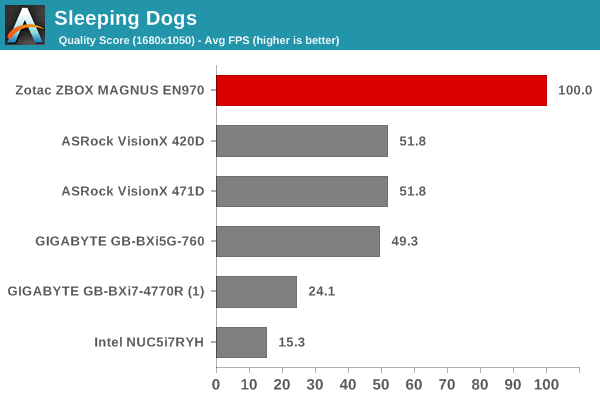
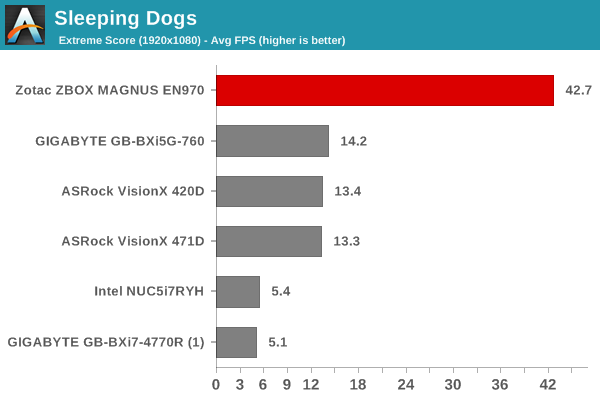
Tomb Raider
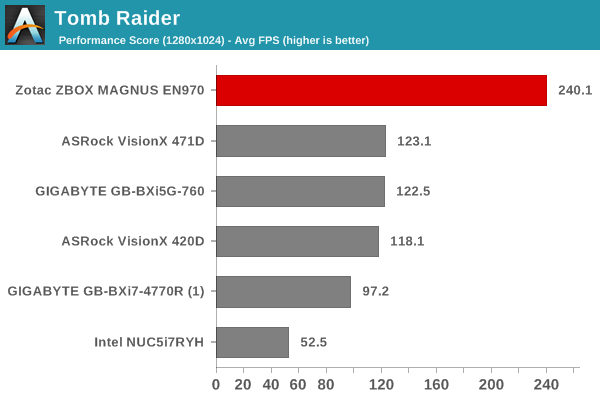
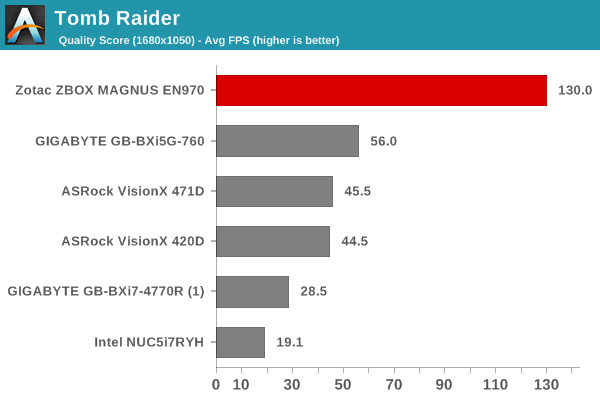
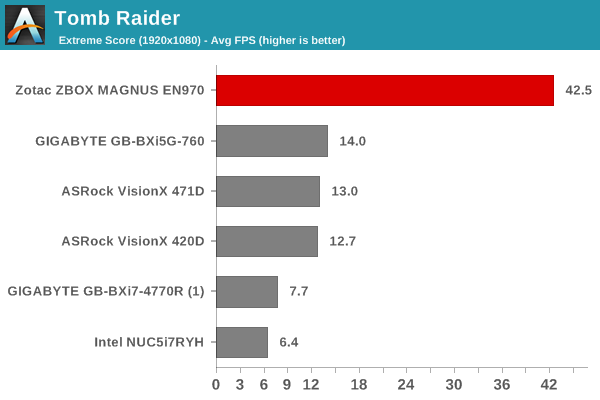
Bioshock Infinite
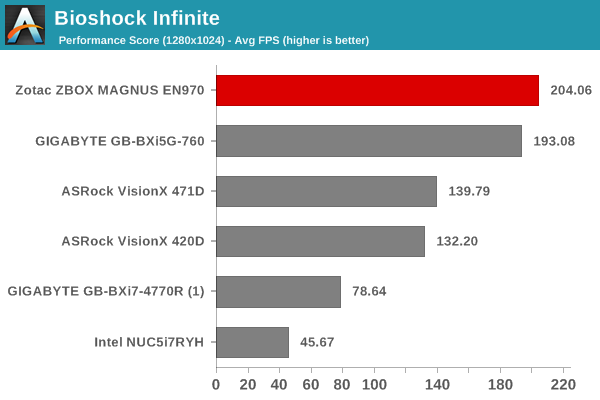
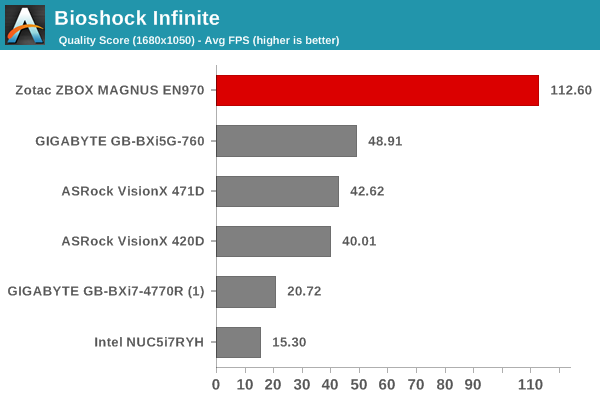
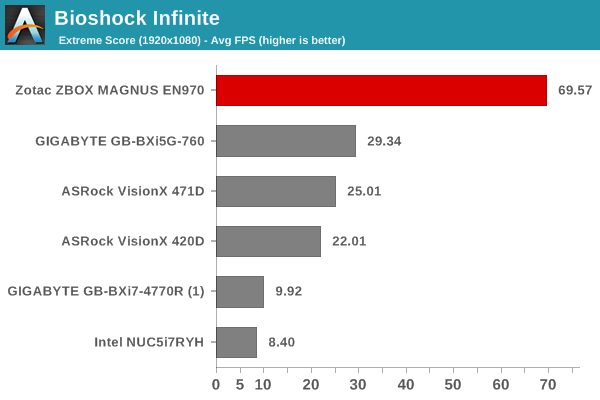
DiRT Showdown
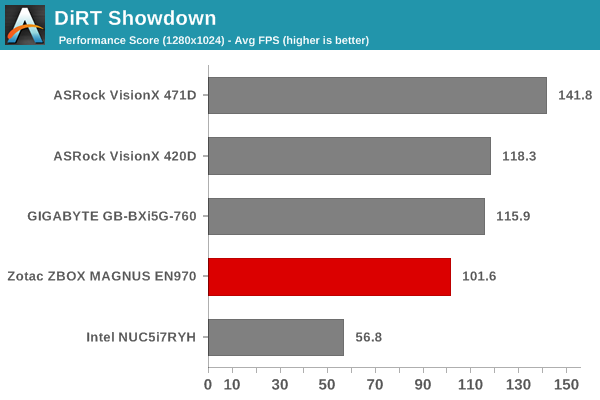
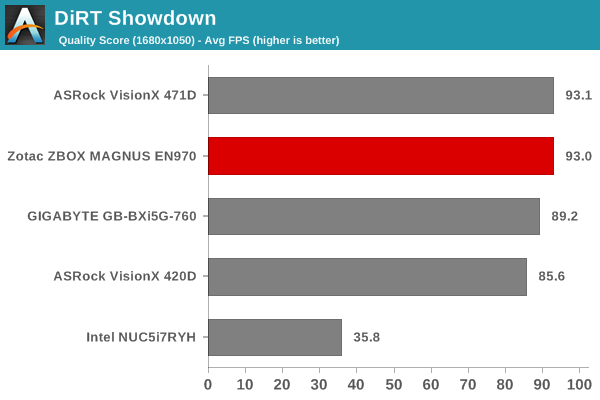
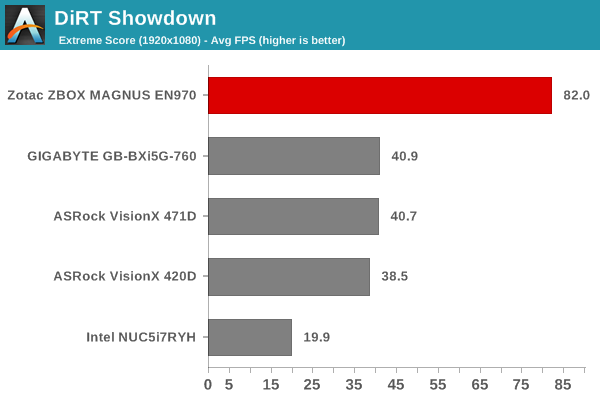
The Talos Principle
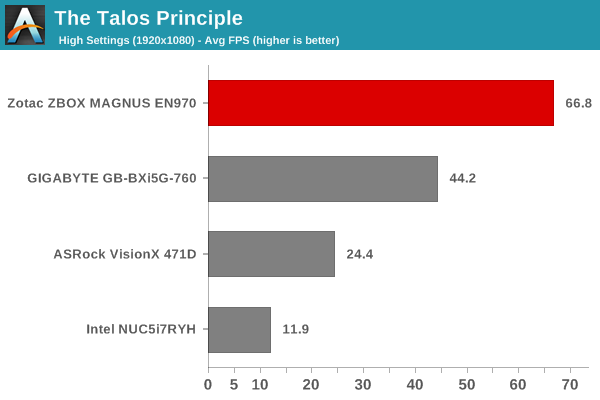

GRID Autosport
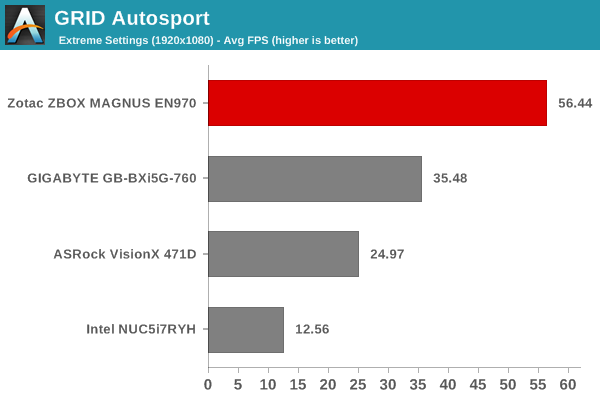
In the gaming benchmarks, the NVIDIA GTX 960 (GTX 970M) simply smokes the competition, particularly at the 1080p quality settings. The ZBOX MAGNUS EN970 more than makes up for the weak CPU with impressive gaming performance.










88 Comments
View All Comments
Teknobug - Tuesday, September 29, 2015 - link
How is the Alpha's i3 4130T slower than a mobile i5 5200U? i3 2.9Ghz vs i5 2.2-2.7GHz and i3 having a slighly faster IPC which matters for games.meacupla - Tuesday, September 29, 2015 - link
I think he said that the GTX 860M was slower than the GTX970M.For gaming purposes, GPU > CPU
smorebuds - Tuesday, September 29, 2015 - link
I guess it depends on what you value more from your living room gaming device... i3-4130T is a bit faster, but also uses more than twice the power, meaning it'll need bigger/noisier fans and a bigger enclosure.Teknobug - Monday, September 28, 2015 - link
The CPU and GPU combination doesn't really make sense here.barleyguy - Monday, September 28, 2015 - link
For the thermal constraints it makes perfect sense. Zotac had an i7 ZBox, but it had the fan noise of a jet engine. For 1080p gaming in a small quiet box, the lower power i5 and GeForce 970m is a good choice IMO.boe - Monday, September 28, 2015 - link
I'd love to see something in this general design but optimized for home theater - no fans - big heat radiators if necessary, HDMI 2.0a well suited for 4K, DTS-X and Dobly Atmos. I'm not terribly concerned about gaming.angrypatm - Monday, September 28, 2015 - link
Audio is always overlooked by manufacturers and reviewers. Power consumption, short of a high end gaming rig that sucks power like a refrigerator, seems irrelevant to me. Example; does anyone really take power consumption int account when buying a tv? "This one has a better picture but that one uses less power, so we'll take the more energy efficient model." --?!boe - Monday, September 28, 2015 - link
Is there any way to get the writers to consider an article on HT PCs? I think building HT servers is pretty standard but building quiet HTPC to play the streamed media can be expensive as the cases I've found can run up to $1500. Technically the entire HTPC could probably be done for about $450 but I haven't found anything that really is SILENT, and has HDMI 2.0a, and supports high end audio. Doesn't mean they don't exist, I'm just not sure who makes them.DanNeely - Monday, September 28, 2015 - link
Anandtech does review a lot of HTPCs. If you're looking for a DIY build guide, they seem to be very infrequent even for general use systems (vs sites like Arstechnica doing them yearly). A general build your own guide might be interesting; but I wonder if this wouldn't be a better subject for a future Build-a-Rig competition.http://www.anandtech.com/tag/htpc
SpartyOn - Monday, September 28, 2015 - link
I built a Steam streaming PC/HTPC with this embedded solution which seems to fit your requirements: http://www.asrock.com/mb/Intel/N3700-ITX/Just put it in a fanless chassis or a really good box with a silent fan and you're good to go. Doesn't meet your high-end audio requirement per se, but there is an open x1 slot for adding whatever audio solution is needed.
I've been rocking this for the last month and a half and it's been a great game and video streamer (though I'm not doing 4K output - don't have a 4K TV).
I think I paid $200 for the parts (board & CPU, 8GB ram, 64GB SSD, case w/ incl. PSU).